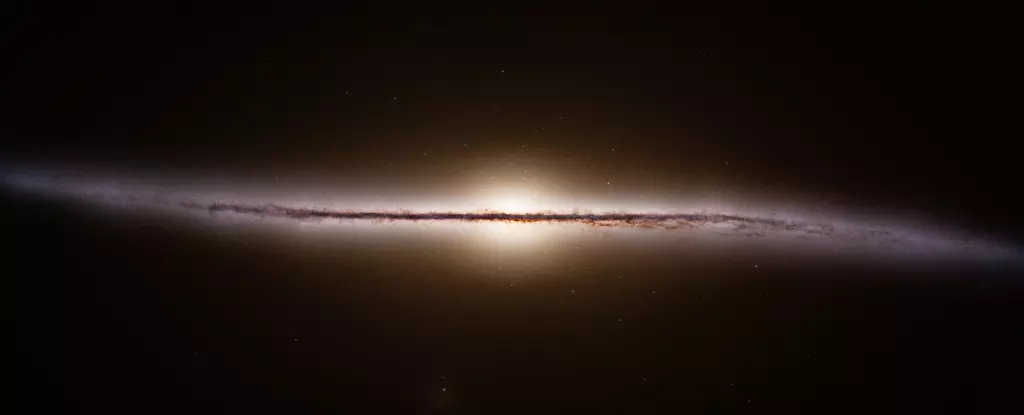The exploration of our galaxy has taken a monumental leap thanks to the European Space Agency’s (ESA) Gaia mission. During its operational lifetime, Gaia has redefined our comprehension of the Milky Way, forcing astronomers to reevaluate long-standing hypotheses about its structure, evolution, and dynamics. This article delves into the significance of Gaia’s findings and considers the profound implications of its data as we reflect on the remarkable journey of this groundbreaking mission.
The mission was unprecedented in its ambition and scale, collecting data on over two billion celestial objects, primarily stars, through precise astrometric measurements made over 11 years. The sheer amount of information—an estimated three trillion data points—has enabled astronomers to construct a detailed three-dimensional map of our galaxy. This dynamic portrayal showcases not only the distribution of stars but also their motions, enhancing our insights into the Milky Way’s kinetic history. Gaia’s maps are far from static; they are vivid representations of an ever-evolving celestial landscape.
Historically, our understanding of the Milky Way’s structure evolved through various astronomical techniques employed since the mid-20th century. Researchers used radio astronomy to penetrate the dense dust clouds obscuring our view and to chart hydrogen concentrations, enabling the identification of the galaxy’s spiral arms. Despite these advancements, earlier missions like ESA’s Hipparcos provided only a glimpse of what was possible, measuring the motions of about 100,000 stars with a much-reduced precision. Gaia equipped astronomers with the tools needed to achieve a true leap in our knowledge, greatly expanding the dataset available for analysis and interpretation.
Through Gaia’s meticulous measurements, astronomers have uncovered previously unknown details that reshaped galactic studies. The mission has revealed that the Milky Way hosts a complex web of stellar formations, with the spiral arms appearing less distinct than once thought. This prompted astronomers to reconsider the likelihood of fossil arms—structures formed from past interactions with other galaxies or tidal disturbances. For instance, remnants of ancient interactions could contribute to the intricate, wave-like curvature observed in the Milky Way’s galactic disc. These findings provide significant insight into the history of the galaxy as a whole.
Moreover, Gaia’s unprecedented observations have enabled scientists to analyze the galactic warp, likely caused by the gravitational influence of nearby galaxies such as the Sagittarius Dwarf Spheroidal Galaxy. This offers a fresh perspective on galactic dynamics and highlights the interplay between our galaxy and its cosmic neighbors. The realization that our galaxy is not simply a static entity, but rather an ongoing narrative of interactions and changes, has reshaped scientific understanding.
As a byproduct of Gaia’s extensive data, astronomers and artists alike have begun to visualize the Milky Way with unparalleled clarity. Artistic representations generated from the mission’s findings have provided the public with incredible insights into the structure of our galaxy. For instance, striking side views gleaned from Gaia data have solidified our understanding of the Milky Way’s morphology, demonstrating a rich tapestry of star formation and lending emotional weight to our perception of the cosmos.
These visuals also serve an important role in engaging wider audiences with astronomy. By transforming complex data into accessible imagery, Gaia has breathed life into a subject often deemed esoteric. The interplay between science and art that Gaia has fostered highlights a crucial aspect of education and communication in modern astronomy, bridging gaps between expert and layperson alike.
As we transition towards the eventual conclusion of the Gaia mission, with the final data release scheduled for late 2030, it is imperative to keep in mind that the impact of Gaia extends far beyond the statistics and discoveries made during its operation. The legacy it leaves behind continues to fuel questions and lines of inquiry within the astronomical community. New methodologies and techniques developed from Gaia’s findings will likely guide future explorations and missions, perhaps even extending to our search for exoplanets or life beyond the Solar System.
In summation, the Gaia mission stands as a testament to human ingenuity and persistence in our quest for knowledge about the universe. By unveiling the hidden complexities of the Milky Way, Gaia has not only transformed our understanding of our home galaxy but has also inspired generations to further explore the cosmos. While we may be at the end of one mission, we are on the cusp of opening new avenues of inquiry that derive their foundation from its awe-inspiring conclusions. As such, Gaia’s contributions will resonate through the annals of cosmic discovery for years to come.

